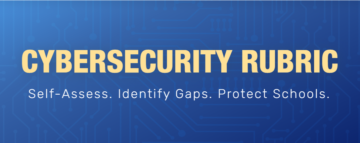
Innovation is such a nebulous word. When I changed my title to “Director of Innovation” my wife’s first comment was, “What exactly do you do?” My response was, “well….I innovate!”
The truth is it’s been nothing more than a buzzword-y phrase that schools and districts like to use to label their actions without actually doing the work. It’s a necessary first step on their journey toward truly being innovative, but the true work that goes into it requires leadership, vision, and modeling.
The World Economic Forum (opens in new tab) recently updated their “Top 10 Job Skills of the Future” to reflect abilities that future employees would need in 2025. Critical thinking, creativity, resilience, and complex problem-solving have been on their list for several years. Their most recent update (opens in new tab)now also includes “Analytical Thinking and Innovation” as the top skill for future employees.
Knowing the importance of innovation to the future employment of our students should be a motivating factor for schools to change the way they do business. But the truth is schools are less about innovation and risk-taking and more about conformity and compliance. We are teaching students how to walk in a straight line down the hallway and the right way to answer a math problem. Sir Ken Robinson famously spoke about how schools are designed around factory model (opens in new tab). Through our actions and organization, we are pushing our kids away from innovative and creative thinking, even though we know it’s important.
The importance of risk-taking and failure
Recently, I’ve been traveling the globe speaking to schools and leaders about risk-taking, failure, and the role these play in our own creativity and innovation. Many of the schools have enjoyed some level of success when it comes to test scores, graduation rates, or the implementation of a one-to-one device program. This perceived success can lead to a feeling of ‘Why change and take a risk if I’ve already been successful?’
Ed Catmull (former CEO of Pixar) talks about this regularly in his book Creativity, INC. (opens in new tab) He remarks that one of the greatest barriers to risk-taking is success. If you’ve been successful at something, it’s actually harder to change than someone who is not successful.
Continuing to do school the way we’ve always done hinders our students for their future. Every day, innovative new technologies (such as ChatGPT (opens in new tab)) are being introduced that make the worksheet model of learning more and more obsolete.
Whenever I ask a crowd to raise their hand if they’ve ever failed, every hand in the room goes up. Failure makes a great teacher. It teaches resilience, creativity, and motivation while also building courage and character. However, failure is not a positive word in education.
If we truly want our schools and students to be innovative, our first step is acknowledging that failure is acceptable.
Roadblocks to creativity and innovation
Creativity generally does not happen in programmatic and risk-averse cultures. Students who thrive playing the game of school struggle in more open-concept, project-based learning environments. Educators also struggle with this way of thinking initially because it demands many things and offers a level of risk.
When I ask educators what stops them from being creative, the answers usually always fall into the following camps:
Time – Educators feel as though they are living in a time famine. So many initiatives handed down from the state, and the perception that state-testing is the ruler of all their time, puts them in a stressful situation. It’s hard to be creative when you are stressed or don’t feel like you have the time to truly dedicate themselves toward a creative or innovative concept.
Support – The ideology of growth mindset has been spouted by many administrators the past decade or so. The truth is many of them have what I call a “False Growth Mindset.” Yes, they love Carol Dweck’s work (opens in new tab) around the subject but they rarely actually put action behind their own words. To truly encourage teachers to try new things and take a risk, they also must be willing to do so. If a teacher is in a structured, compliance-forward environment, they likely won’t be willing to encourage innovative thinking in their own classroom.
Fear – This is probably the strongest reason why people don’t change and try new things. Fear that they will be judged or exposed for thinking differently. Fear that they may mess up and lose their job. Fear that they will waste the already precious time they have trying something new that doesn’t work. Ultimately, in the words of H.P. Lovecraft, it’s also the oldest kind of fear — fear of the unknown — that stops them from trying something different.
A method for growing innovative thinking in schools
Acknowledging that true innovation takes risks and failure is an important part of the process. Another important step is acknowledging that state mandates, funding issues, and traditional thinking are obstacles to overcome and work around. Creating small opportunities for risk-taking and failure generates the atmosphere for innovative thinking.
Here are just a few ways educators can do this without having to re-write curriculum or go against state mandates:
Ask questions instead of telling answers – My own kids come home from school and will look over their shoulder at me to ask if they are doing their homework the right way. This again goes back to the mindset that kids need to learn a “right way” to complete the task, lest they be seen as a non-conformist.
Altering this belief in the classroom requires only a slight change in how educators address their students. Rather tell them how to do something step-by-step, ask them questions. When I introduce a new technology tool to students, I don’t tell them how to use it, I ask them. “How do we add text to this book?” or “How do I add a background to my recording?” are just some ways to model this. Even though I know the answer, having the students explore and guess the answer creates an environment in which they are comfortable to take small risks and ask questions. If I just tell them what to do and how to do it, I’ve stifled their creativity in some way.
Create shared risk-taking challenges – Big psychological differences exist between taking a risk in front of everyone versus everyone taking a risk together. One thing I do in all my talks is model this shared risk-taking through various brain break-type activities. We then reflect on the differences of what it feels like to be a room where everyone is encouraged to take risks versus a room that is more focused on an individual taking risks. Doing 5-minute risk-taking activities with students (and teachers) encourages an environment of innovation and creativity.
For those looking to really push their students’ thinking and encourage failure, activities such as BreakoutEDU (opens in new tab) provide a great mechanism for students to take shared risks and discuss failure.
Learning via the iterative cycle – Kindergarten students have no problem trying new things and messing up. Their willingness to iterate is why they often have some of the most creative responses to problems. One great example of this is the infamous “Marshmallow Challenge (opens in new tab)” in which they tend to perform better than most adults. Using the iterative cycle to learn in the classroom is the key to truly creating an innovative environment.
The iterative cycle encourages students to design, build, and test prototypes of a solution many times over. This inherently also encourages risk-taking and failure as there is no negative perception of making mistakes. Failure becomes a necessary requirement in the design process. The iterative process is similar to the scientific method or the writing process in that trial and error help make the end product better. In many ways, the process is more important than the product.
The answers to life aren’t in the back of a textbook – Futurist and entrepreneur Seth Godin once said, “We need to be asking our kids to solve interesting problems…and we need to be ok if they get it wrong.”
If school leaders want to move from being innovative in name toward being innovative in practice, they must first realize the role risk-taking and failure play. Accepting failure and encouraging risk-taking is not something you can just teach, it takes the right environment to make it grow. It also means that everyone in the school community is willing to model this behavior in their daily lives. Asking questions, messing up, reflecting on failure, and creating shared risk-taking experiences will help our schools move from places of conformity toward places of true innovation.
- SEO Powered Content & PR Distribution. Get Amplified Today.
- Platoblockchain. Web3 Metaverse Intelligence. Knowledge Amplified. Access Here.
- Source: https://www.techlearning.com/news/using-failure-and-risk-taking-to-unlock-creativity-and-innovation
- 10
- a
- abilities
- About
- acceptable
- Action
- actions
- activities
- actually
- address
- administrators
- adults
- against
- All
- already
- always
- Amazon
- Amazon.com
- and
- Another
- answer
- answers
- around
- Atmosphere
- back
- background
- barriers
- because
- becomes
- behind
- being
- belief
- Better
- between
- book
- Brain
- build
- Building
- business
- call
- ceo
- challenges
- change
- character
- Cms
- COM
- come
- comfortable
- comment
- community
- complete
- complex
- compliance
- concept
- creates
- Creating
- Creative
- creativity
- critical
- crowd
- Curriculum
- daily
- day
- decade
- dedicate
- demands
- Design
- design process
- designed
- device
- differences
- different
- discuss
- Doesn’t
- doing
- Dont
- down
- Economic
- Education
- educators
- employees
- employment
- encourage
- encouraged
- encourages
- encouraging
- Entrepreneur
- Environment
- environments
- error
- Ether (ETH)
- Even
- EVER
- every day
- everyone
- exactly
- example
- Experiences
- explore
- exposed
- Failed
- Failure
- Fall
- famously
- fear
- few
- First
- focused
- following
- Former
- former ceo
- from
- front
- funding
- future
- game
- generally
- generates
- get
- globe
- Go
- Goes
- great
- greatest
- Grow
- Growing
- Growth
- happen
- Hard
- having
- help
- hinders
- Home
- homework
- How
- How To
- However
- HTTPS
- implementation
- importance
- important
- in
- includes
- individual
- infamous
- initially
- initiatives
- Innovation
- innovative
- instead
- interesting
- introduce
- introduced
- issues
- IT
- Job
- journey
- judged
- Key
- kids
- Kind
- Know
- Label
- lead
- leaders
- Leadership
- LEARN
- learning
- Level
- Life
- likely
- Line
- List
- Lives
- living
- Look
- looking
- lose
- love
- make
- MAKES
- Making
- mandates
- many
- math
- means
- mechanism
- method
- Mindset
- mistakes
- model
- modeling
- more
- most
- Motivation
- move
- name
- necessary
- Need
- negative
- New
- New technologies
- obsolete
- obstacles
- Offers
- oldest
- ONE
- opens
- opportunities
- organization
- Overcome
- own
- part
- past
- People
- perceived
- perception
- perform
- Pixar
- Places
- plato
- Plato Data Intelligence
- PlatoData
- Play
- playing
- positive
- practice
- Precious
- probably
- Problem
- problem-solving
- problems
- process
- Product
- Program
- programmatic
- project-based
- prototypes
- provide
- Push
- Pushing
- put
- Puts
- Questions
- raise
- Rates
- realize
- reason
- recently
- recording
- reflect
- regularly
- requirement
- requires
- resilience
- response
- Risk
- risks
- Role
- Room
- Said
- School
- Schools
- several
- shared
- should
- similar
- Sir
- situation
- skill
- skills
- small
- So
- solution
- SOLVE
- some
- Someone
- something
- speaking
- Sponsored
- State
- Step
- Stops
- straight
- structured
- Struggle
- Students
- subject
- success
- successful
- such
- Take
- takes
- taking
- Talks
- Task
- teacher
- teachers
- Teaching
- Technologies
- Technology
- test
- textbook
- The
- The Future
- The State
- their
- themselves
- thing
- things
- Thinking
- Thrive
- Through
- time
- times
- Title
- to
- together
- tool
- top
- toward
- traditional
- Traveling
- trial
- true
- Ultimately
- updated
- us
- use
- usually
- various
- Versus
- via
- vision
- Waste
- ways
- What
- which
- while
- WHO
- will
- willing
- Willingness
- without
- Word
- words
- Work
- would
- writing
- Wrong
- years
- youtube
- zephyrnet











